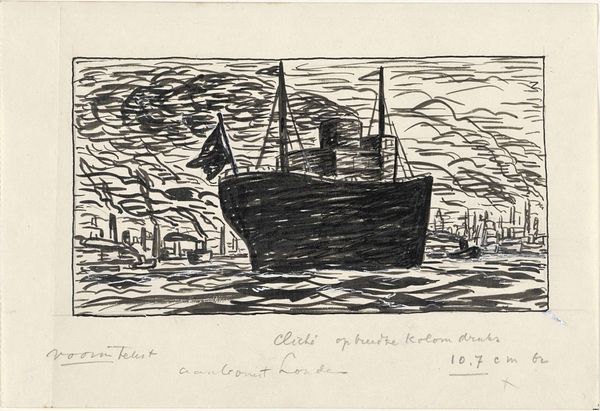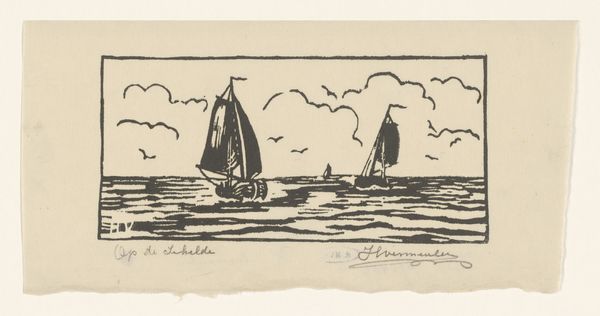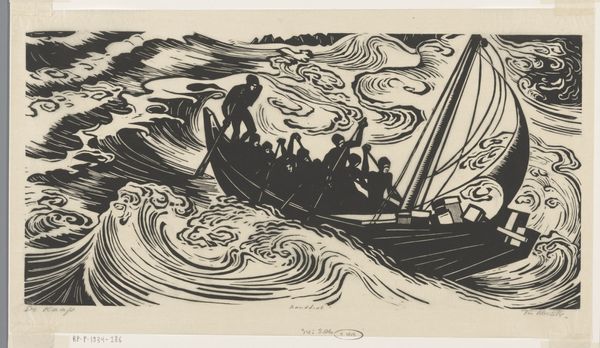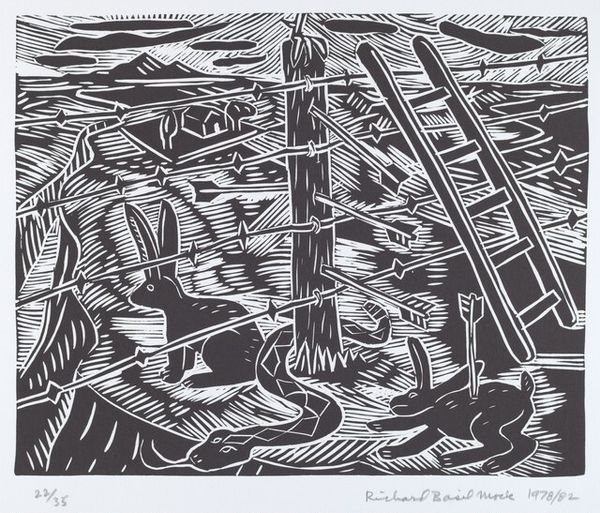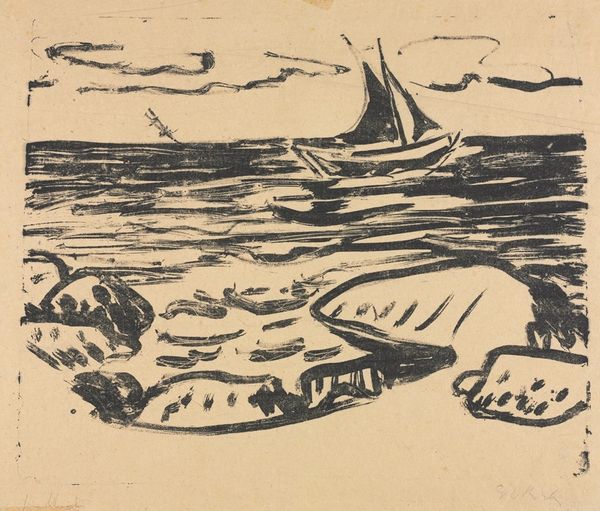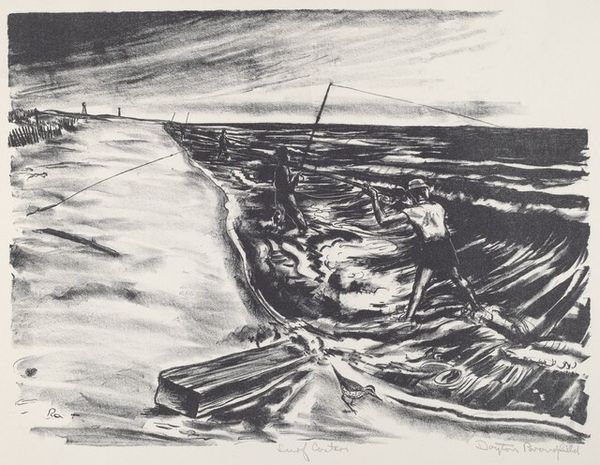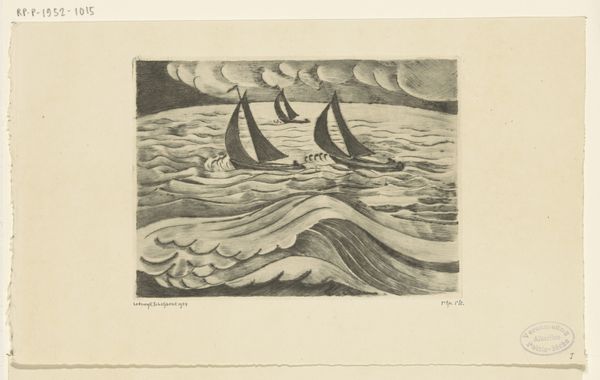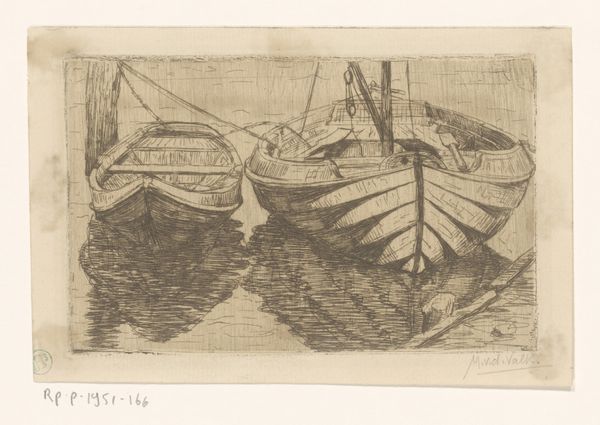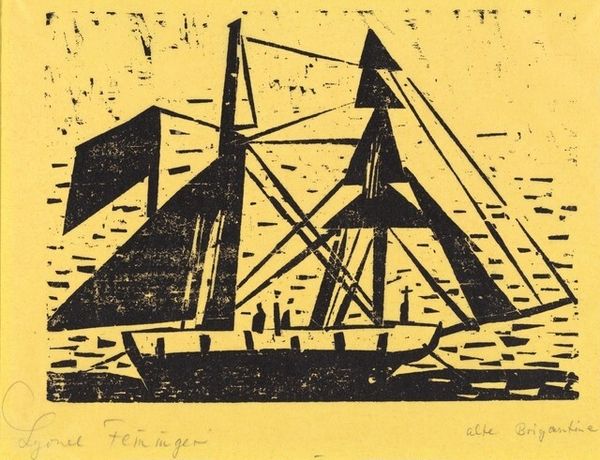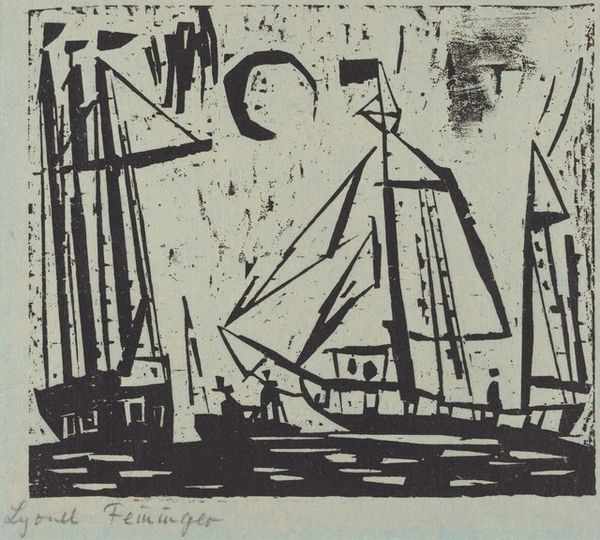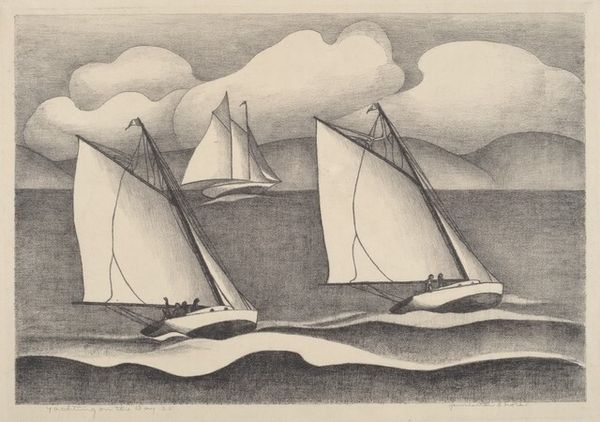
print, woodblock-print, woodcut
# print
#
landscape
#
woodblock-print
#
geometric
#
woodcut
#
line
Dimensions: Image: 127 x 178 mm Sheet: 188 x 272 mm
Copyright: National Gallery of Art: CC0 1.0
Curator: This woodcut, created by Grace Martin in 1925, offers us a striking scene of Cape Cod. Look at how she reduces the landscape to these bold shapes! What are your initial impressions? Editor: It's so graphic and stark. The high contrast immediately pulls me in. It’s got this feel of nautical simplicity, almost like a signal flag in its design. You get such a clear sense of boats against the ocean. Curator: Martin was deeply involved in the Provincetown art scene during the early 20th century, a community that experimented quite a bit with printmaking techniques. This style of bold simplification ties into larger movements in American art at the time. Editor: Absolutely. I see that influence so strongly in the piece. Sailing vessels always appear loaded with symbolism, they reflect ideas of freedom, exploration, escape... Here, Martin uses very deliberate imagery. What do the boats symbolize against this landscape, I wonder? Curator: Well, Provincetown itself was, at the time, shifting from a fishing and whaling center to a burgeoning artists’ colony, drawing people with promises of artistic liberty. The boats could reference the shift. Also, look how she uses line to show reflections and the light itself – a technique used by a lot of Modernists. Editor: Good point! Notice the rising sun too... That sun evokes progress and fresh beginnings, that, combined with the sharp delineation, makes it strikingly simple, clean and even powerful, visually. What I love most is the cultural echoes this provokes. You immediately feel as if you understand the cultural aesthetic of the place. Curator: I completely agree. There’s a directness in it which avoids sentimental nostalgia but celebrates the landscape in a clean way. I love this view into the complex history that developed at the time. Editor: Right. It becomes less a portrait and more of a landmark— a bold reminder of cultural memory that captures this place. Curator: So true! We’ve explored what can be such deceptive imagery but it now brings us more in touch with understanding this beautiful scene. Editor: It is really astonishing when you reflect on all those things, how simple design can be an act of bold creation.
Comments
No comments
Be the first to comment and join the conversation on the ultimate creative platform.
